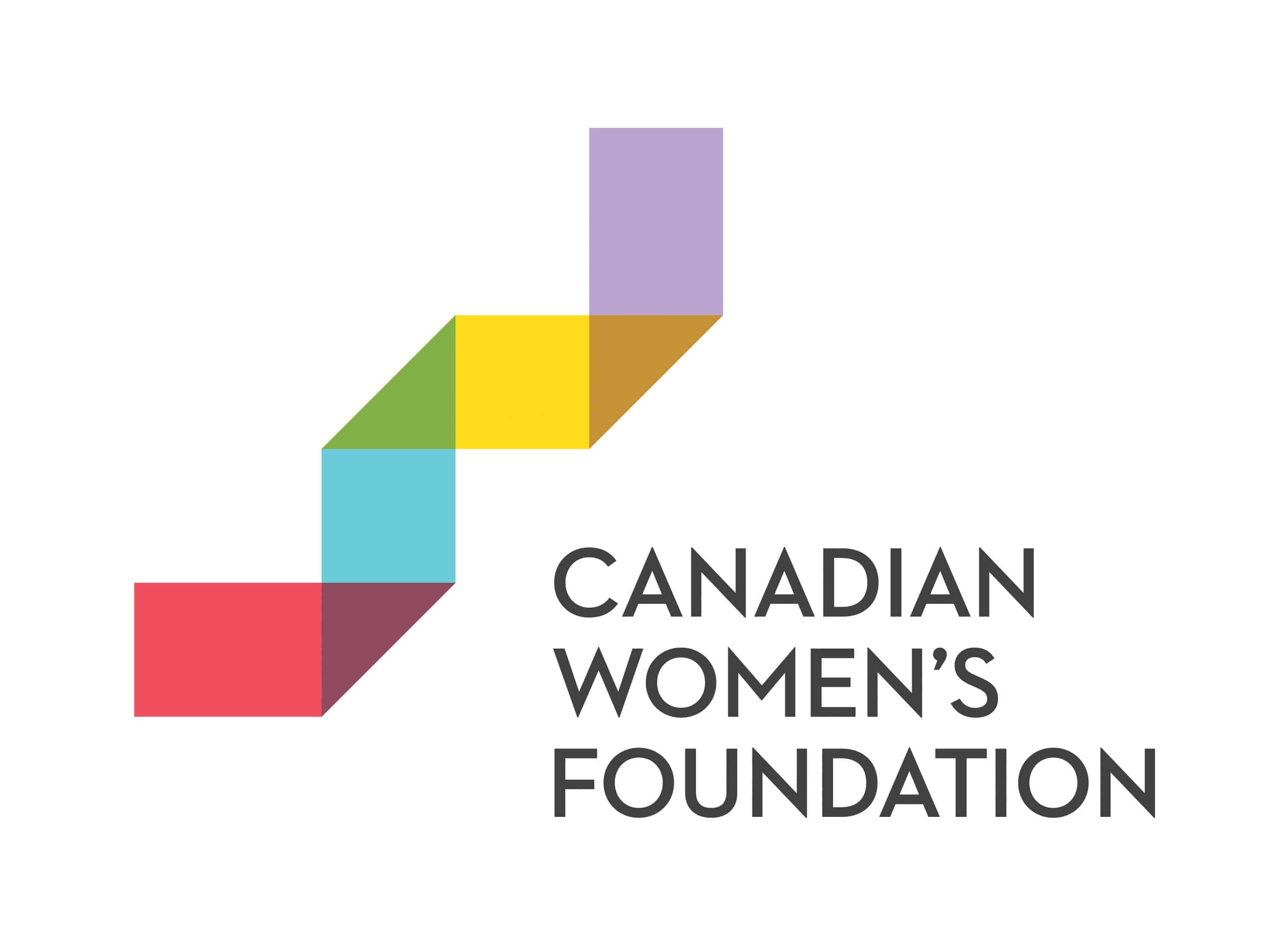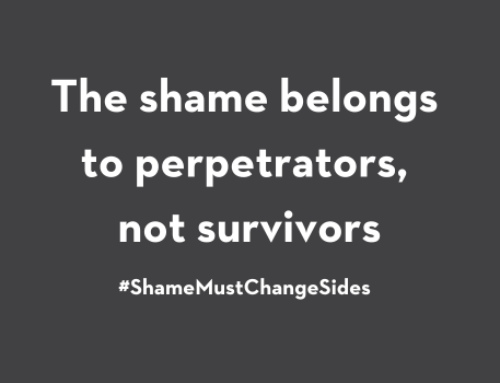
There were sparkly red stilettos, strappy metallic sandals, and snakeskin mules. Many men put on high heels with pride (and with socks) for the White Ribbon Campaign’s annual Walk a Mile in her Shoes fundraiser earlier this month.
“It was inspiring to see so many people walking to create awareness about violence against women and showing their support for the work of White Ribbon,” says Kevin Vowles, the organization’s Community Engagement Manager.
Since 1991, the White Ribbon Campaign has rallied men and boys to become allies in ending violence against women. Before joining the organization, Kevin spent four years working with youth in a teen healthy relationships program on Salt Spring Island, B.C. that has received funding from the Canadian Women’s Foundation.
“It was the experience of a lifetime to spend four years working with that program with students from Grade 7 to 10. I would see students in the program develop the skills to intervene on someone else’s behalf, and confront sexist or misogynistic behaviour. I saw it in the hallways, when students would say ‘Hey, that’s not cool to say that about her – it’s not okay.’ To see that in action was really inspiring.”
Kevin discusses how he continues to engage men and boys in violence prevention through his work with the White Ribbon Campaign, and how he has seen teens evolve through their experience in healthy relationships programming.
Q: Aside from Walk a Mile in Her Shoes, what are some of the other ways White Ribbon is engaging men and boys in gender equality?
A: One of the most inspiring White Ribbon initiatives this year is our Men of Quality public service announcement with the Toronto Maple Leafs. It’s a call to action, and I’m so pleased that major sports teams are getting involved and being awesome role models.
On an ongoing basis, I’m doing workshops in schools, exploring the stereotypes and gender norms that are leading to violence against women. I feel hopeful and heartened when I work with students in high schools. I often say to them, ‘‘Your generation is the generation that’s going to change violence against women and girls!’’ I believe this with every fibre of my being, because I see the hunger in their eyes for these teachings. Most often, though, they have the knowledge and wisdom to do this work already, and we’re just getting the conversation moving.
After discussing the importance of ending violence against women and girls, I spend time acknowledging the experiences of the males in the room with violence, most often from other males in their life. I note that this wounding is a universal experience, and that it’s rooted in the idea that we get power from hurting others in our lives, and that there are a number of gendered expectations that we’re expected to live up to that are harmful to not only ourselves, but to women and girls to a larger and more severe extent, and this is what we call unhealthy and toxic masculinity.
We also unpack homophobia and sexism and look at how we can support each other in living outside of toxic masculinity, really focusing in on things like emotional intelligence, building consent culture, intervening effectively as bystanders, and being healthy role models to other male-identified people in our lives.
Q: What are some of the barriers to engaging men and boys to end violence against women, and how can those working toward gender equality overcome them?
A: I do think shame and defensiveness are barriers, because if we just start talking about violence against women and girls, often the males in the room can feel defensive and shamed, when they may view themselves as having been part of that violence.
I frame the initial discussion around the need for participants to seek out help and resources if they’ve experienced violence. It’s important to reach out for help and support, because if you don’t there are all kinds of mental health impacts to staying silent. The lack of healing may lead to violence against women and girls as well.
When we start there, the males in the room can see that I’m connected to the experience of being male in our North American culture, which in many ways is very sick. As males, we don’t always have the opportunity to have rich and meaningful connections with other males because of systems like homophobia and toxic masculinity.
These systems set up expectations that we shouldn’t express emotions and that crying is not okay. If we do, our masculinity is policed by systems of sexism and homophobia. For example, if a male expresses feeling sorrow, he might get told to “man up” and not be “such a girl”. So often for many of us when we show up with our friends, it’s for beer and baseball, and it’s maybe not really a meaningful connection. I am essentially trying to break down some of those barriers to living a more connected, happier, healthier life.
Another critical barrier to engaging men and boys is looking at the ways that violence is socially learned. Many facets of our patriarchal culture and social lives teach males that violence is not only acceptable, but beneficial – that males gain social rank and capital by committing violence. Rape culture, for example, is socially learned, and often those propagating it are those who have a great deal of power.
We can begin to live out that which we consume and find stimulating. It’s essential for teenagers to understand this, because many are immersed in cultures of violence – like in video gaming – which promotes violence. These cultures teach that things like consent in a relationship are unimportant, that it’s okay to objectify women and girls, and to cause harm to not only women and girls, but other men and boys.
I think acknowledging those social learning pieces is critical, and that’s also part of deconstructing shame. If males have perpetrated some form of violence, social learning isn’t an excuse – they still have to take responsibility, and they should, but it’s easy to understand how it is transmitted and filters down through every generation.
Q: You spent several years working with youth on developing healthy relationship skills, as a way of preventing violence against women. How do you see these programs influence participants?
A: I think there’s an overall attitudinal shift with long-term programming. Considering that many teenagers are engaging in relationships, I saw a far higher level of maturity among students after doing, say, 50 hours of programming about relationships, than many adults have.
They look at key skills such as reflective listening, empathy, trust, your responsibilities in a relationship, assertive communication versus passive and aggressive communication. And for those who are perhaps vulnerable to violence, knowing the signs and symptoms of unhealthy relationships is critical.
One of the most effective activities was deconstructing gender norms. In the program, we looked at the norms imposed on those identifying as men and boys, and those for women and girls. Both of those groups would do a “gender box” and then present the box back to the whole group. Of course now we are recognizing that gender is a larger spectrum too, but we have to acknowledge that a great deal of violence occurs because of gender norms, and so that’s the purpose of this important exercise.
All of those expectations, which are so impossible to live up to and also quite harmful, get presented to the larger group. There’s a moment for everybody to see that we all have struggles. As much as gender-based violence is a problem – a big problem and there’s no question that’s where we should be focusing our energies – the males in the room have a lot of struggles too, and we’ve got to be able to empathize with those and really give them space to be seen.
Working with the program on Salt Spring was an amazing learning experience for me, too. I am grateful to the amazing women – Christina Antonick and Lynda Laushway – who mentored me into this field of work. Their contribution to the field of violence-prevention education is immeasurable.
Q: How do men and boys benefit from supporting gender equality?
A: While the benefits of gender equality for men and boys are vast, it’s important to emphasize that we do this work to end violence against women and girls because it’s the right thing to do. We need to end the gender-based violence, which targets women and girls, and impacts them disproportionately and severely.
That being said, when we advocate for gender equality and a safer space for women and girls, we benefit by having richer social lives and relationships ourselves. Gender equality means more time with children, higher levels of life satisfaction, better health, and the overall economic benefits are also significant.
When we do this initial work around emotional intelligence – which I think has to be a top priority, because it’s a place that teenage males can all start from – we’re not only going to have less conflict in our relationships, because we’re able to articulate those feelings and not go to a place of anger, but those relationships are just going to be happier.
In gender-equal societies, men simply suffer less depression, violence, suicide, and divorce. The benefits are just enormous.
Kevin Vowles, Community Engagement Manager at the White Ribbon Campaign, is a member of the Canadian Women’s Foundation’s Teen Healthy Relationships Advisory Committee, and worked with the Respectful Relationships program delivered by SWOVA Community Development and Research Society on Salt Spring Island, B.C.
Learn More:
- How To End Violence Against Women? One Step is Teen Healthy Relationships Programs.
- Equal to the Task
- Meet the World’s Most Prominent Male Feminist: A Q&A with Michael Kimmel
- Sign up for our e-newsletter to have our latest stories and resources sent to your inbox.
- Follow us on Facebook and Twitter to join a national conversation on empowering girls.







